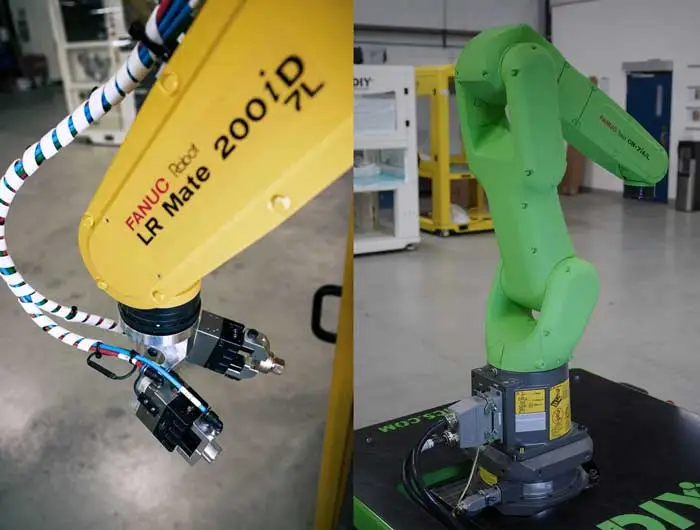DIY Robotics’ blog
KEEP UP WITH THE LATEST NEWS IN
INDUSTRIAL ROBOTICS.
INDUSTRIAL ROBOTICS.
Enjoy! and don’t forget to take a look at our products.
WHAT TO KNOW ABOUT ROBOTIC CUTTING INSTALLATIONS – Laser Cutting
Industries throughout the world have begun evolving their workspaces to include robotic automation. Often, in large-scale manufacturing environments, these robots perform repetitive or dangerous tasks with little to no error. In any manufacturing environment, it is essential to find a high accuracy, speed efficient way to shape or cut materials and products. In turn, this will save money, keep the manufacturing process steady, and eliminate any hazards workers would be subject to if they were to operate the cutting equipment themselves.
Manufacturers in the USA – Last Chance to Avail the Benefits of Section 179
Did you know that USA-based Small and medium-scale (S&M) businesses, can save large chunks in tax? Thanks to section 179, S&M businesses are or could be eligible to save tax money by either purchasing or financing specific equipment. This can help manufacturers upgrade to automation, save money, and utilize it to invest in the growth of their business.
The Differences between FANUC LR MATE and FANUC CR ROBOT
Each year, around 1.6 million twins are born around in the world. Some are identical and some are not. But even identical twins are not completely identical. The same could be stated regarding the FANUC CR robots and the LR Mate series robots. They may look like twins because they share similar physical designs with very little differences, but they are both quite different in many aspects. The major difference can be noted in their working speed, environment, and safety. To better understand the FANUC LR MATE and CR Robots, we should review their capabilities, similarities and differences.
Possible robotic applications for the metal industry
The metal industry is one of the biggest revenue-generating industries in today’s economy. It impacts various end-user applications and caters to a vast range of sectors: agriculture, automotive, medical, aerospace, construction, electronics, and many more. As it is such a huge industry, it needs automation to meet the standards and production rate of the demanded supply.
Part Entry Accessories for Robotic Cells – part 2
Thanks to the first section of this blog, we know that part-entry accessories are a great complement to an industry’s automation because they make it more profitable. Next, we will look at part entry accessories when bulk feeding is not an option, and when a feeding mechanism is not restricted by the shape and size of the parts. So let’s get into it:
Part Entry Accessories for Robotic Cells – part 1
According to the RIA (Robotic Industry association), in 2016, 34,606 robots were installed in North America alone. The main purpose of having robots in an industry is to reduce laborious, repetitive, and dangerous tasks. But to perform what they are intended to do, robots need material and parts to be fed in. This is where part entry accessories come into play. Automating this step helps industries utilize their workforce in other, more productive work.








